The leaves of cotton thistle (Onopordum acanthium) are covered with fine white hairs that give them a silvery sheen. This felt-like pubescence may serve as protection against the hot sun or desiccation.
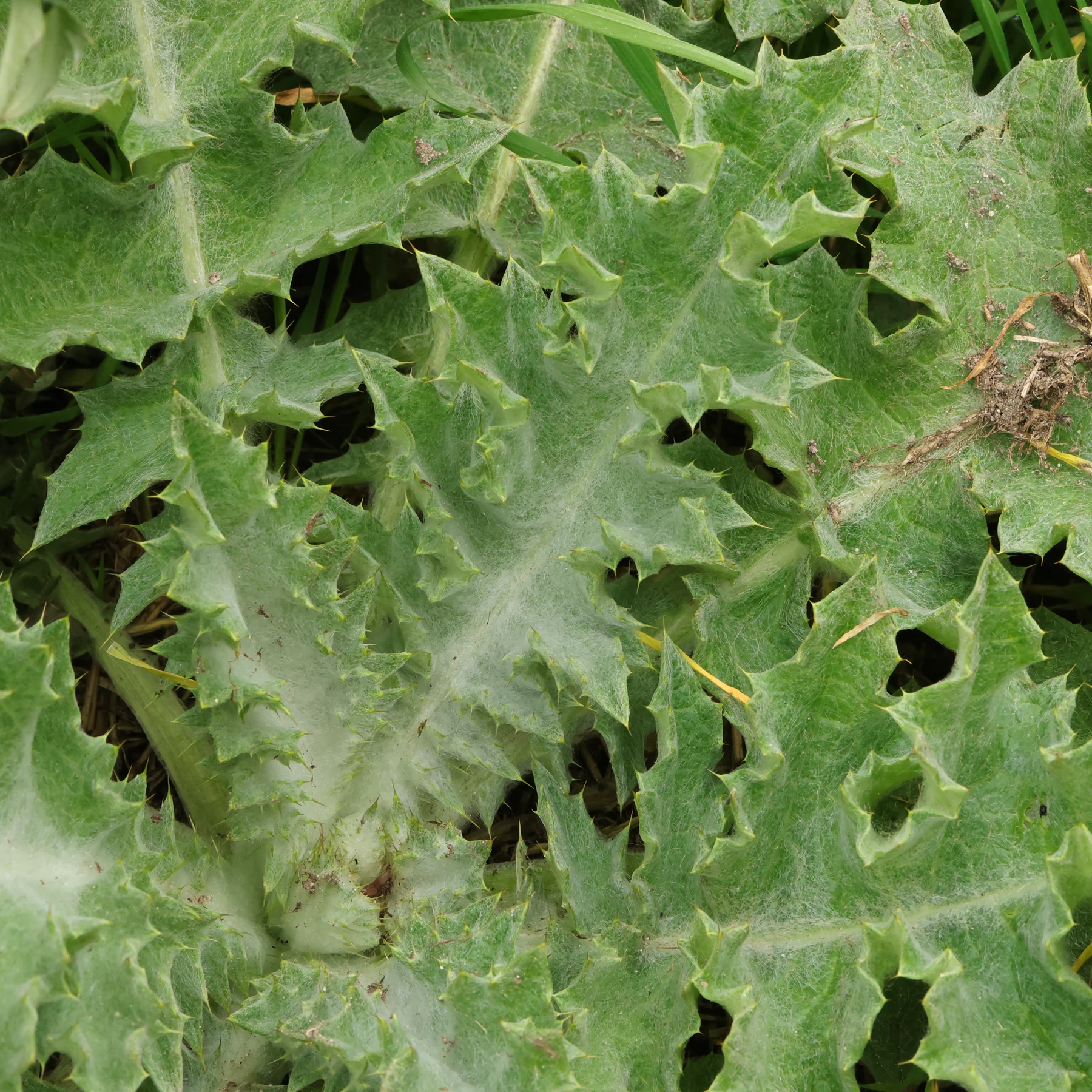
Habitus & biology
Onopordum acanthium is a biennial. After the seeds germinate in late summer or fall, a rosette of basal leaves first appears. Only after overwintering does it grow upwards and can reach a height of up to two meters.
The basal leaves wither before the flowers open. Once the seeds are ripe, the rest of the plant dies.

The flowering period of the cotton thistle can last from June to August.
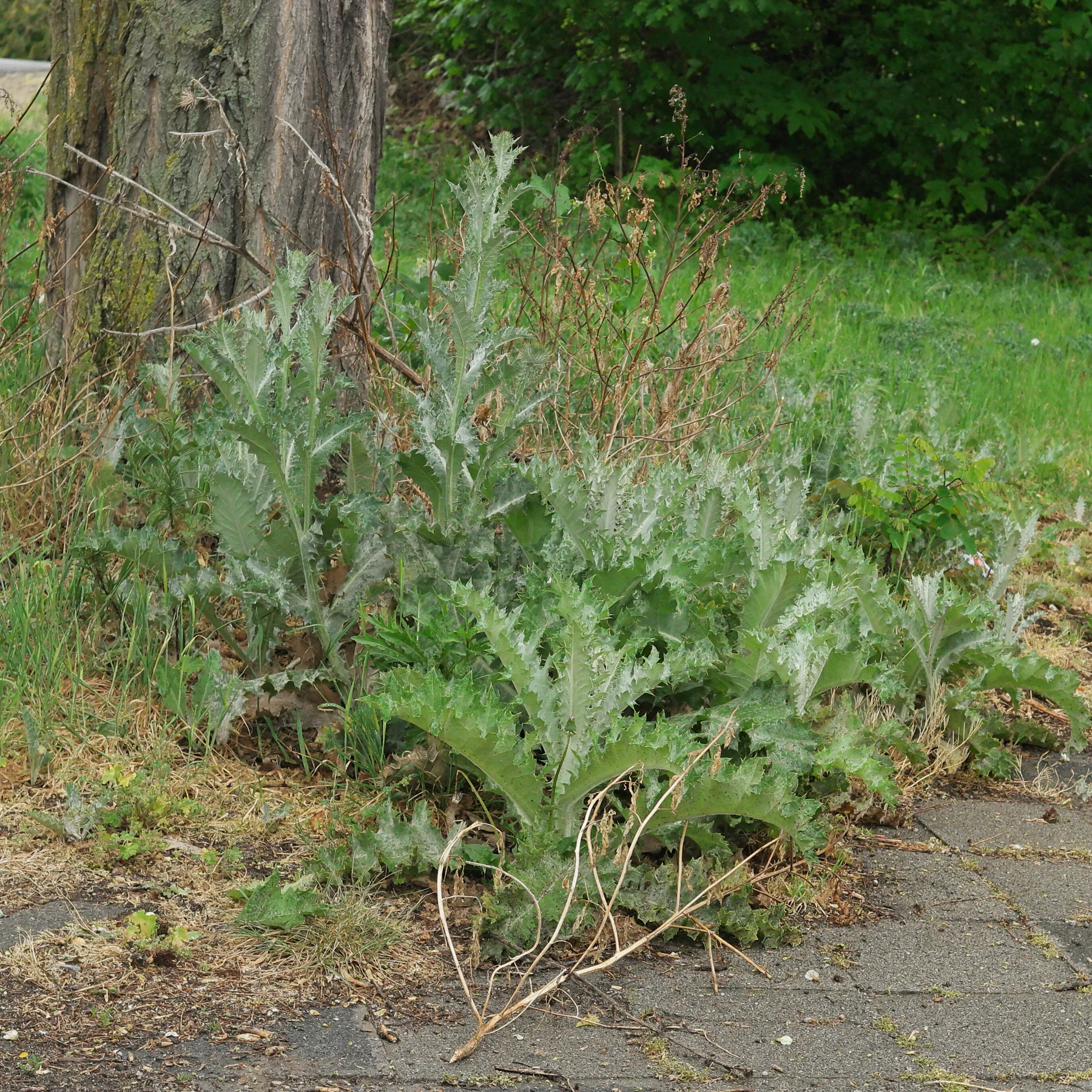
Origin & habitats
The native range is Eurasia and North Africa. As an introduced species, it is also found in some regions of Australia, North America and South America (source).
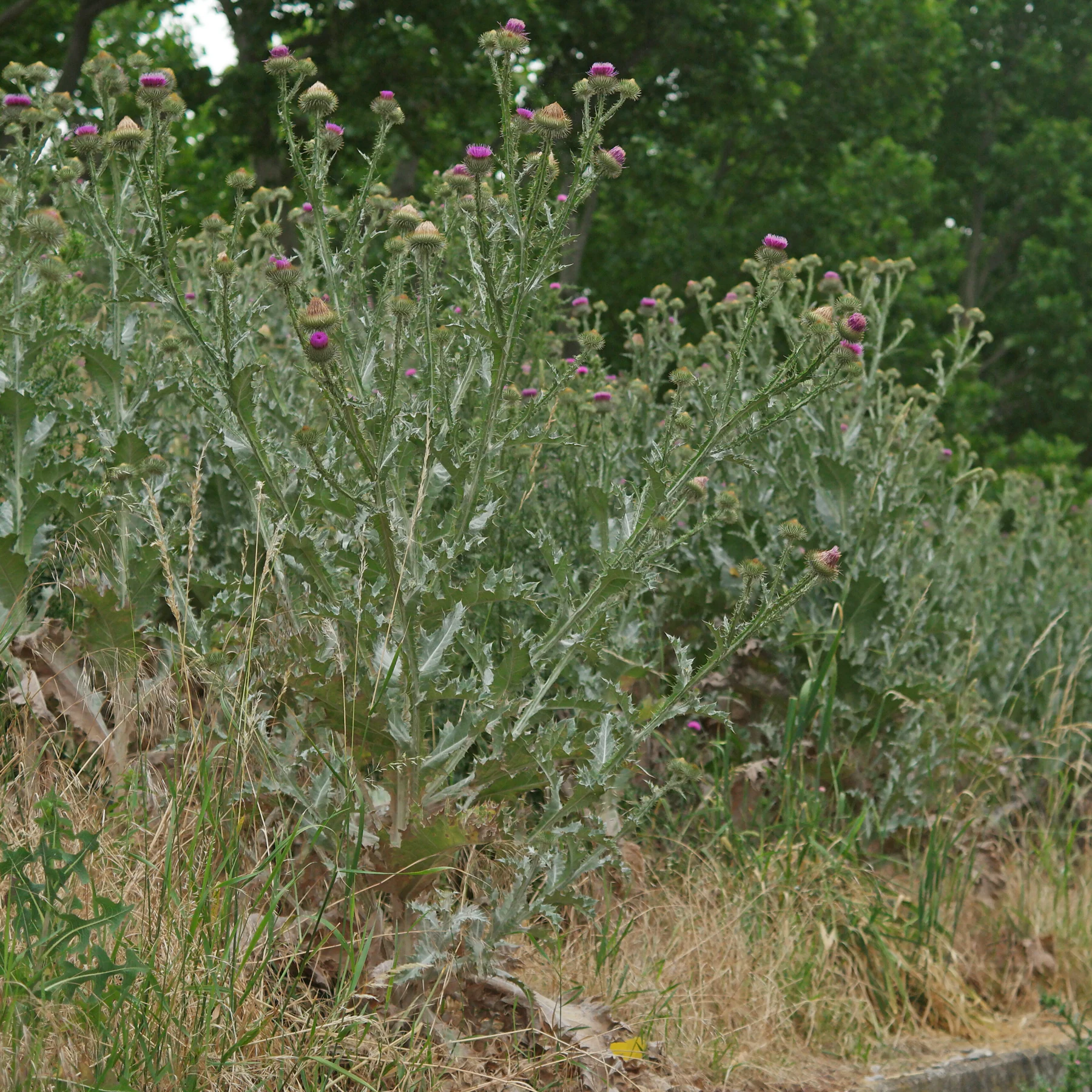
Onopordum acanthium grows along roadsides, embankments, meadows, and quarries and does best in warm, sunny places.

Botany
The cotton thistle belongs to the Daisy family (Asteraceae) and is closely related to the artichokes. Onopordum acanthium is also known colloquially as Scotch thistle or Scottish thistle.
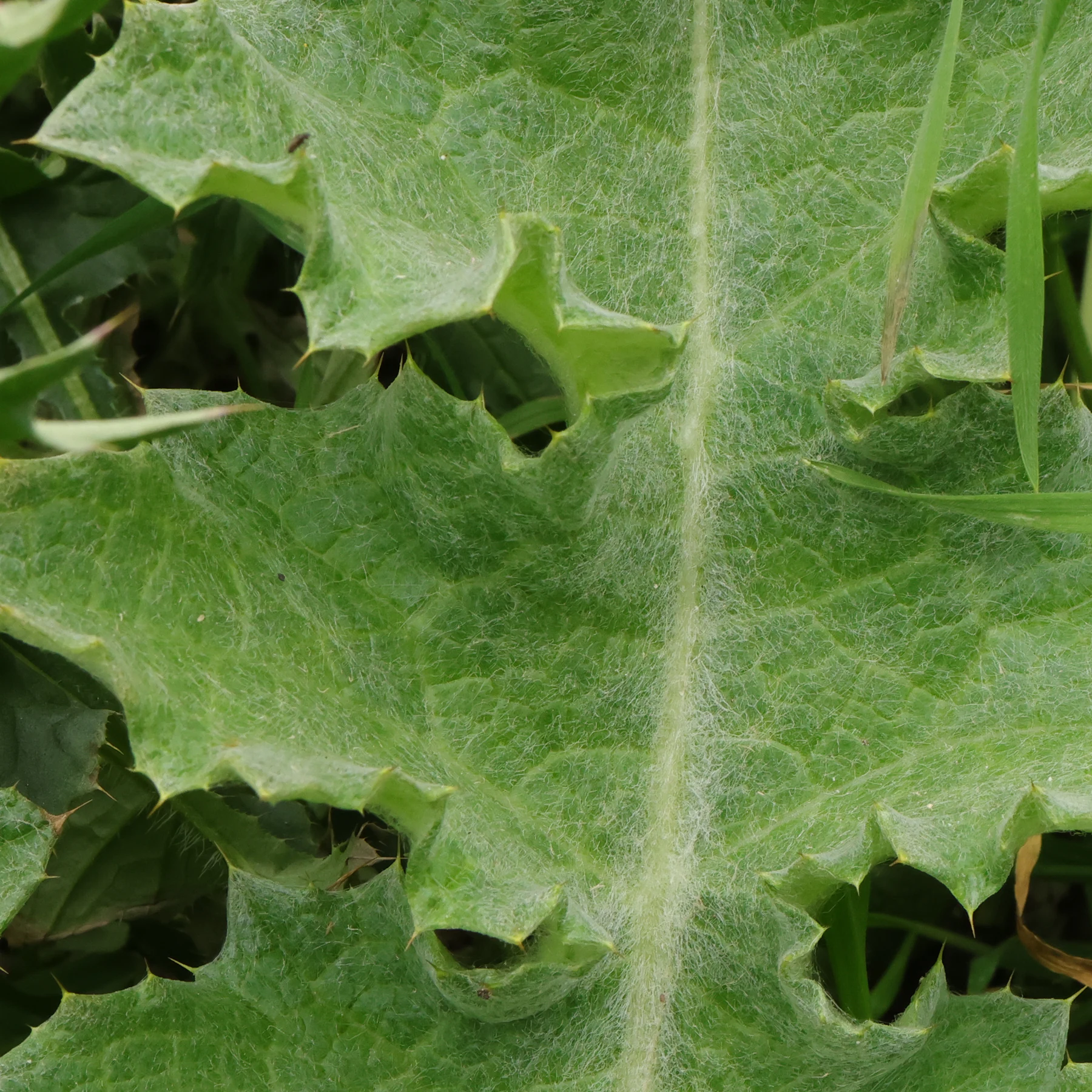
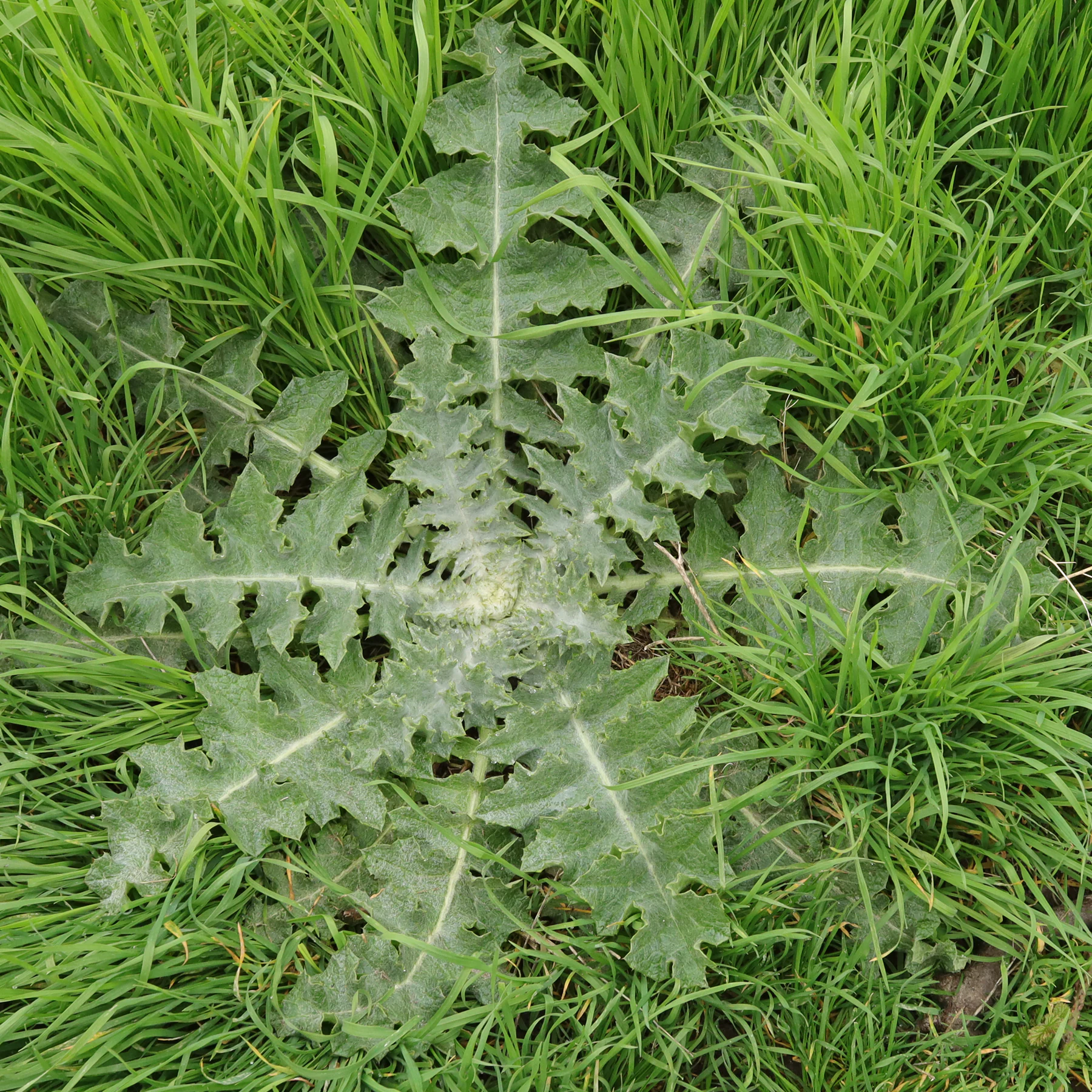
 Coreopsis grandiflora
Coreopsis grandiflora  Symphyotrichum dumosum
Symphyotrichum dumosum  Jacobaea maritima
Jacobaea maritima 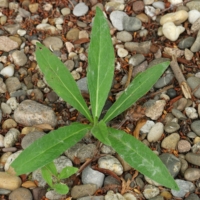 Inula britannica (British yellowhead)
Inula britannica (British yellowhead)  Calendula officinalis
Calendula officinalis  Liatris spicata
Liatris spicata  Galinsoga ciliata (hairy galinsoga)
Galinsoga ciliata (hairy galinsoga)  Lapsana communis (common nipplewort)
Lapsana communis (common nipplewort)  Chrysanthemum zawadskii
Chrysanthemum zawadskii 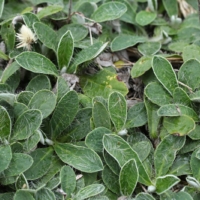 Hieracium pilosella (mouse-ear hawkweed)
Hieracium pilosella (mouse-ear hawkweed)  Helianthus tuberosus
Helianthus tuberosus  Artemisia absinthium (wormwood)
Artemisia absinthium (wormwood)  Cirsium oleraceum (cabbage thistle)
Cirsium oleraceum (cabbage thistle)  Helianthus giganteus
Helianthus giganteus  Senecio vulgaris (groundsel)
Senecio vulgaris (groundsel)  Echinops bannaticus
Echinops bannaticus  Echinacea purpurea
Echinacea purpurea  Achillea filipendulina
Achillea filipendulina 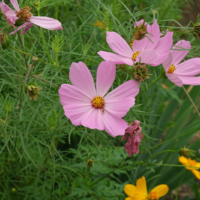 Cosmos bipinnatus
Cosmos bipinnatus  Bellis perennis cv.
Bellis perennis cv.  Silybum marianum (milk thistle)
Silybum marianum (milk thistle)  Dahlia × hortensis
Dahlia × hortensis  Rudbeckia fulgida
Rudbeckia fulgida